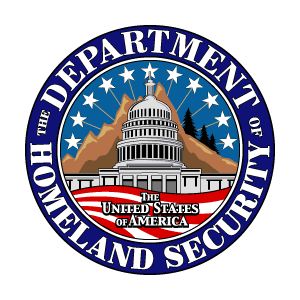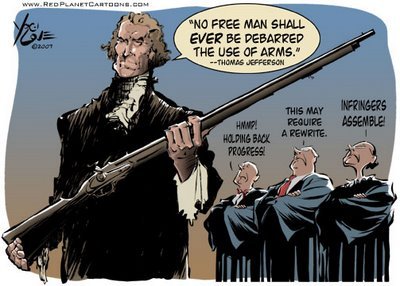 From FoxNews.com:
From FoxNews.com:
Online rumors about a big government munitions purchase are true, sort of.
The Homeland Security Department wants to buy more than 1.6 billion rounds of ammunition in the next four or five years. It says it needs them — roughly the equivalent of five bullets for every person in the United States — for law enforcement agents in training and on duty.
Published federal notices about the ammo buy have agitated conspiracy theorists since the fall. That’s when conservative radio host Alex Jones spoke of an “arms race against the American people” and said the government was “gearing up for total collapse, they’re gearing up for huge wars.”
The government’s explanation is much less sinister.
The federal government’s answer: it’s for training.
Allow me to intercede here for a moment, and attempt to provide some perspective.
The bottom line is this: over the last 10 months, 1.625 BILLION rounds of ammunition have been ordered by DHS — your federal government. Not state governments. Not county governments. Not city governments.
I currently work in law enforcement for a Fornicalia law enforcement agency of 2,000+ personnel. In the past I have worked for another Fornicalia agency and other federal agencies. I have trained at Quantico and I have trained at FLETC (Federal Law Enforcement Training Center) in Georgia. Only two agencies train at Quantico: the FBI and the DEA. All other federal agencies (91 of them) train at the FLETC in Glynn County, GA (otherwise known at Glyco) near Brunswick, or they train at the major FLETC adjunct center in Artesia, New Mexico. Well, with the exception of Cheltenham, and the newest, Charleston.
Actually, that dates me as a dinosaur. Artesia is now under Homeland Security, as is the original training center. I only experienced Quantico and Glynco.
That said, as a training center, Glynco is a major repository for the storage of ammunition. It’s a former navy base that has, comparatively speaking, halfway semi-decent security. One of their major firing ranges is so large that a training vehicular pursuit can be conducted on one of their four major driving ranges (Frankly, Range 9 is my favorite!) and terminate at a firing range. You can physically drive vehicles into this range and then, under post-pursuit adrenaline, have trainees live-firing at targets downrange.
As an aside: this makes me reflect on what my multiply-proposed and ultimate ideal Final Training Scenario for all law enforcement officers would be in any and every academy:
1. A dispatched Code 3 call where the trainee/recruit would have to logically and cogently respond, in an emergency vehicle, with lights and siren, to a critical incident in which intersections would have to be safely cleared, vehicles would have to be safely passed, obstructions would have to be safely negotiated; which would lead into:
2. Arrival at the call, where the trainee/recruit would have to decompress, control the scene, explain an aspect of law to the victims of a crime, including the elements of said crime; which would lead into:
3. The suspect returning to the scene; which would lead into:
4. A hands-on physical altercation with the suspect, to include ACB techniques (arrest control, baton, handcuffing) which, when unsuccessful, would lead to the suspect fleeing the scene in a vehicle; which would lead into:
5. A live vehicular pursuit through a driving range, in which the trainee/recruit would be expected to follow the suspect vehicle at a safe distance, radio in pertinent updates, clear intersections safely, clear various obstructions safely, and keep an enforcement distance utilizing high visual horizon; which would lead into:
6. A pursuit termination in an open range where vehicles could drive and targets were pre-positioned down-range. The trainee/recruit would have to position the vehicle tactically, radio the position of the stop, and then respond to various “shoot / don’t shoot” targets with a minimum percentile score.
I proposed this Final Scenario to three separate LE organizations and was told my expectations were, first, too high and, second, unobtainable.
The LE venue with the likeliest ability to achieve this training goal was federal, either under TEVOC or at FLETC.
Which brings me back to ammunition and the feds.
No one, back in The Day, ordered billions of rounds of anything in advance.
No one had the budget.
To refresh one’s memory:
My original post regarding the ATK contract for half a billion rounds. So, was MarketWatch lying?
A DHS informant already indicated that the federal government is preparing for civil insurrection. And no, the source is not from InfoWars.
What happens, for example, when we go Weimar Republic?
The problem is: statistically, gun purchases are up and gun crime is down.
Guns, in fact, prevent crime.
The NOAA — of all crazy departments — put out a contract for 46,000 rounds of hollow point bullets along with 500 paper targets. What? Why? Are you going to shoot dolphins and weather balloons?
Another DHS solicitation occurred here, in which a further 750 million rounds of assorted bullets, including .357 magnum caliber rounds that are “able to penetrate walls,” were ordered. And — trust me — no one in LE makes orders in .357 any more. Not even .357 Sig. It’s almost as futile as ordering rounds in .41 magnum.
The DHS put out an order for riot gear. “Urgently.”
The DHS also purchased a number of bullet-proof checkpoint booths. Why would that be? So that the Gestapo could “demand your papers” like Hogan’s Heroes? On various interstates and major roadways? Why else?
Is this Cloward-Piven writ large?
A brief history of gun control in the US below:
1791
The Bill of Rights, including the Second Amendment — “A well regulated militia, being necessary to the security of a free state, the right of the people to keep and bear arms, shall not be infringed.” gains final ratification.
1837
Georgia passes a law banning handguns. The law is ruled unconstitutional and thrown out.
1865
In a reaction to emancipation, several southern states adopt “black codes” which, among other things, forbid black persons from possessing firearms.
1871
The National Rifle Association (NRA) is organized around its primary goal of improving American civilians’ marksmanship in preparation for war.
1927
Congress passes a law banning the mailing of concealable weapons.
1934
The National Firearms Act of 1934 regulating only fully automatic firearms like sub-machine guns is approved by Congress.
1938
The Federal Firearms Act of 1938 places the first limitations on selling ordinary firearms. Persons selling guns are required to obtain a Federal Firearms License, at an annual cost of $1, and to maintain records of the name and address of persons to whom firearms are sold. Gun sales to persons convicted of violent felonies were prohibited.
1968
The Gun Control Act of 1968 – “…was enacted for the purpose of keeping firearms out of the hands of those not legally entitled to possess them because of age, criminal background, or incompetence.” — Bureau of Alcohol, Tobacco, and Firearms The Act regulates imported guns, expands the gun-dealer licensing and record keeping requirements, and places specific limitations on the sale of handguns. The list of persons banned from buying guns is expanded to include persons convicted of any non-business related felony, persons found to be mentally incompetent, and users of illegal drugs.
1972
The Bureau of Alcohol Tobacco and Firearms is created listing as part of its mission the control of illegal use and sale of firearms and the enforcement of Federal firearms laws. ATF issues firearms licenses and conducts firearms licensee qualification and compliance inspections.
1977
The District of Columbia enacts an anti-handgun law which also requires registration of all rifles and shotguns within the District of Columbia.
1986
The Armed Career Criminal Act (Public Law 99-570) increases penalties for possession of firearms by persons not qualified to own them under the Gun Control Act of 1986.
The Firearms Owners Protection Act (Public Law 99-308) relaxes some restrictions on gun and ammunition sales and establishes mandatory penalties for use of firearms during the commission of a crime.
The Law Enforcement Officers Protection Act (Public Law 99-408) bans possession of “cop killer” bullets capable of penetrating bulletproof clothing.
1989
California bans the possession of semiautomatic assault weapons following the massacre of five children on a Stockton, CA school playground.
1990
The Crime Control Act of 1990 (Public Law 101-647) bans manufacturing and importing semiautomatic assault weapons in the U.S. “Gun-free school zones” are established carrying specific penalties for violations.
1994
The Brady Handgun Violence Prevention Act (Public Law 103-159) imposes a five-day waiting period on the purchase of a handgun and requires that local law enforcement agencies conduct background checks on purchasers of handguns. (ATF’s Brady Law web site.)
The Violent Crime Control and Law Enforcement Act of 1994 (Public Law 103-322) bans all sale, manufacture, importation, or possession of a number of specific types of assault weapons.
1997
The Supreme Court, in the case of Printz v. United States, declares the background check requirement of the Brady Handgun Violence Prevention Act unconstitutional.
The Florida Supreme Court upholds a jury’s $11.5 million verdict against Kmart for selling a gun to and intoxicated man who used the gun to shoot his estranged girlfriend.
Major American gun manufacturers voluntarily agree to include child safety trigger devices on all new handguns.
1998 – June
A Justice Department report indicates the blocking of some 69,000 handgun sales during 1977 while Brady Bill pre-sale background checks were required.
1998 – July
An amendment requiring a trigger lock mechanism to be included with every handgun sold in the U.S. is defeated in the Senate.
But, the Senate approves an amendment requiring gun dealers to have trigger locks available for sale and creating federal grants for gun safety and education programs.
1998 – October
New Orleans, LA becomes the first US city to file suit against gun makers, firearms trade associations, and gun dealers. The city’s suit seeks recovery of costs attributed to gun-related violence.
1998 – November 12
Chicago, IL files a $433 million suit against local gun dealers and makers alleging that oversupplying local markets provided guns to criminals.
1998 – November 17
A negligence suite against gun maker Beretta brought by the family of a 14-year old boy killed by an other boy with a Beretta handgun is dismissed by a California jury.
1998 – November 30
Permanent provisions of the Brady Act go into effect. Gun dealers are now required to initiate a pre-sale criminal background check of all gun buyers through the newly created National Instant Criminal Background Check (NICS) computer system.
1998 – December 1
The NRA files suit in federal court attempting to block the FBI’s collection of information on firearm buyers.
1998 – December 5
President Clinton announces that the instant background check system had prevented 400 illegal gun purchases. The claim is called “misleading” by the NRA.
1999 – January
Civil suits against gun makers seeking to recover costs of gun-related violence are filed in Bridgeport, Connecticut and Miami-Dade County, Florida.
1999 – May 20
By a 51-50 vote, with the tie-breaker vote cast by Vice President Gore, the Senate passes a bill requiring trigger locks on all newly manufactured handguns and extending waiting period and background check requirements to sales of firearms at gun shows.
1999 – August 24
The Los Angeles County, CA Board of Supervisors votes 3 – 2 to ban the the Great Western Gun Show, billed as the “world’s largest gun show” from the Pomona, CA fairgrounds where the show had been held for the last 30 years. (Typical Gun Show Rules & Regulations here.)
How can any citizen — how can anyone — be expected to know what applies and what does not per city, per county, per state, per the federal government?
Criminals certainly couldn’t care less.
So these detailed and obfuscating laws penalize only the good, and free the bad.
Then — as contrasted to FoxNews — DHS purchases 21.6 million MORE rounds?
I wrote: A study funded by the Department of Homeland Security that was leaked last year characterizes Americans who are “suspicious of centralized federal authority,” and “reverent of individual liberty” as “extreme right-wing” terrorists.
So I suppose I must fess up: I am apparently a terrorist in the eyes of my government, because I believe in the Oathkeepers, because I believe in our US Constitution, and I believe in our Bill of Rights.
And one conclusion that I recently drew:
When massive priority federal orderings get made, that diminishes the availability of ammunition for the civilian and — also — the civilian law enforcement venue.
Plain and simple.
Ammunition is hard to get and order for average Americans. Imagine that.
The federal government killing two birds with one stone: stocking up for itself; reducing rounds available for civilian “terrorists.”
Which means that Fox News is shilling for the Left when and if it wishes.
Be careful.
BZ





